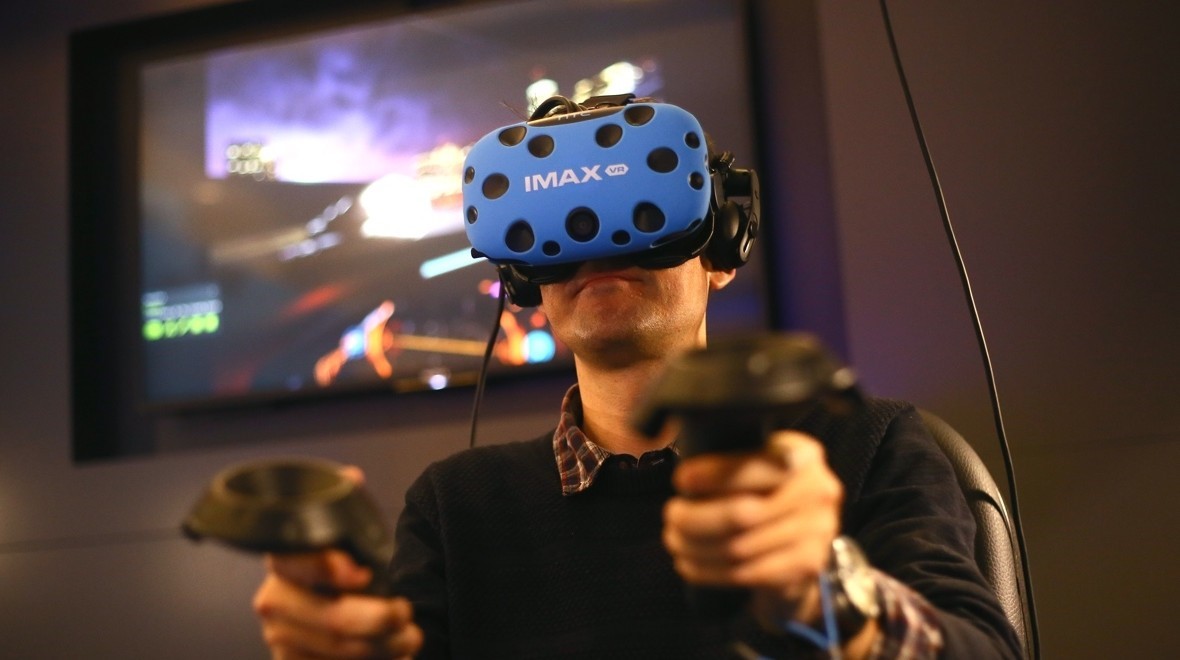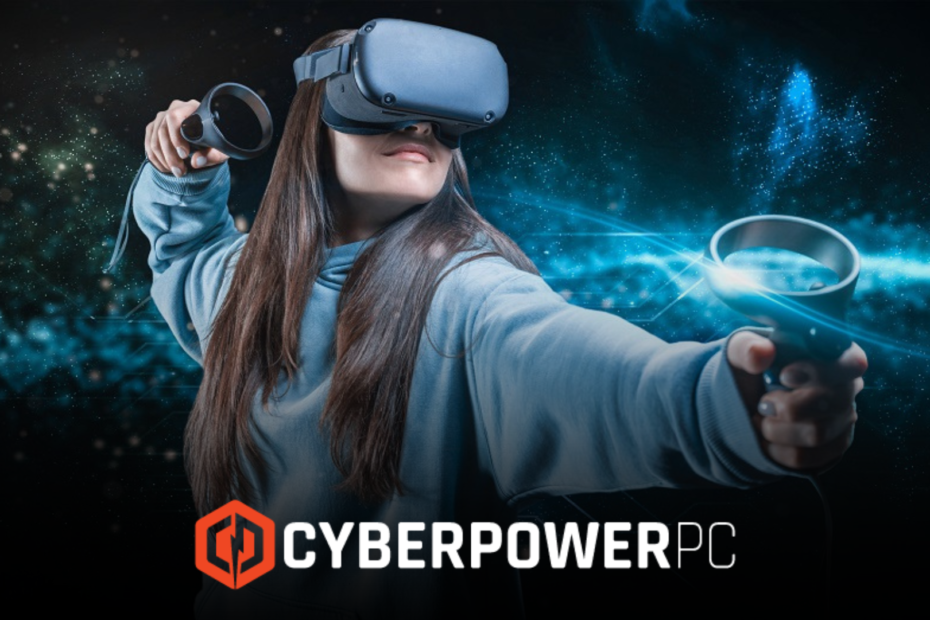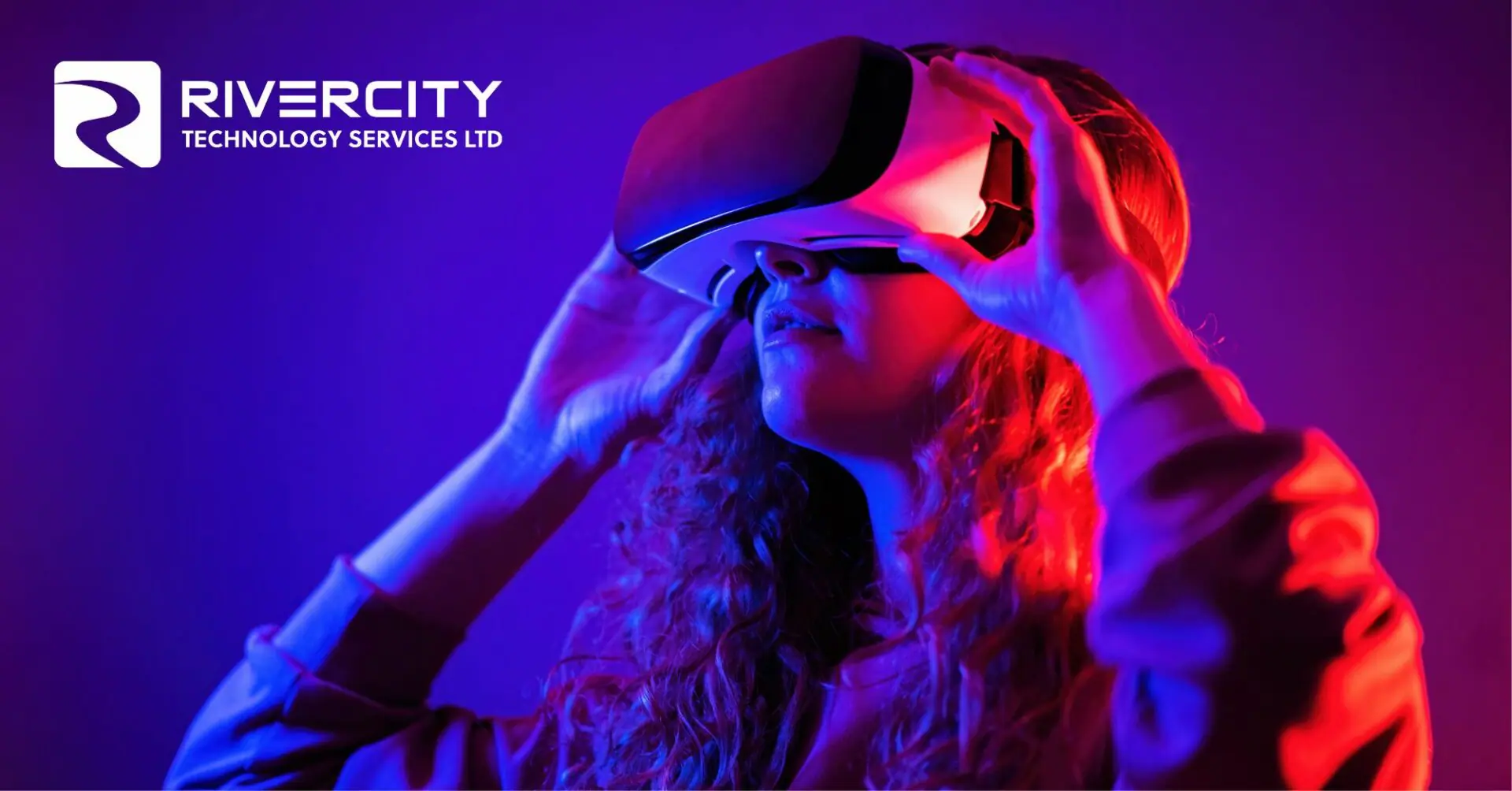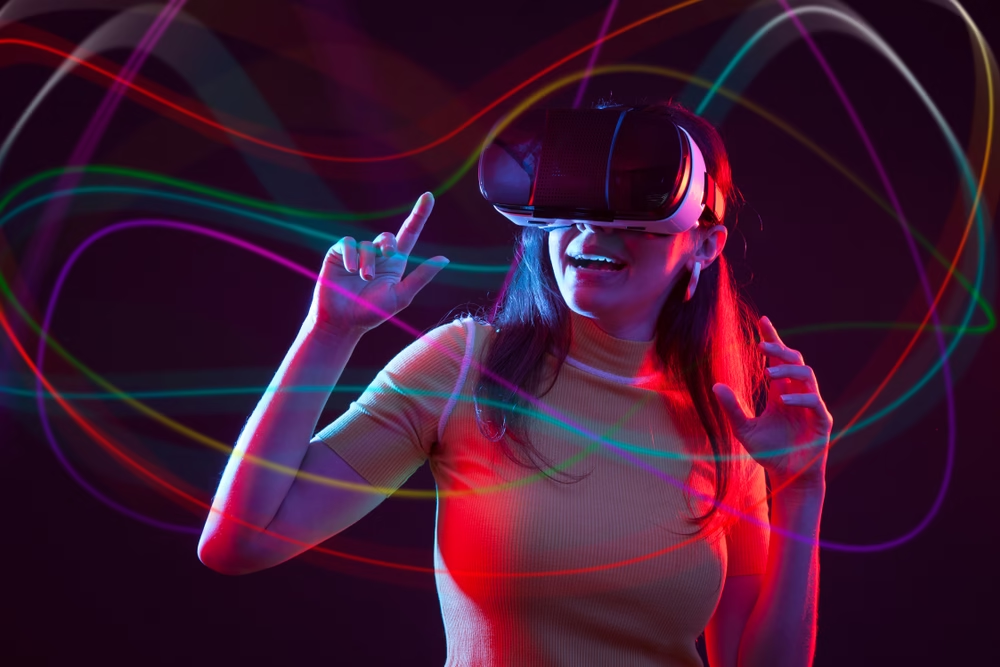Mind-Blowing VR Gaming Innovations Revolutionizing Immersive Experiences
Estimated reading time: 15 minutes
Key Takeaways
- Full-body VR suits like Teslasuit and MOXI are moving beyond simple motion tracking to capture nuanced movements and provide physical feedback, deepening immersion.
- Advanced haptic feedback controllers (Oculus Touch, Valve Index, Bstick) are crucial for simulating touch, texture, and resistance, making interactions feel more tangible.
- Artificial Intelligence (AI) is creating more dynamic and personalized VR experiences through adaptive NPCs, dynamic difficulty, and procedurally generated content.
- Groundbreaking games like *Half-Life: Alyx*, *Resident Evil 4 VR*, and *Boneworks* effectively showcase how these innovations translate into compelling gameplay.
- The future points towards **neural interfaces**, integrated **AI-haptic systems**, and **hyper-reality** setups engaging multiple senses for near-indistinguishable virtual worlds.
- While impressive, challenges like **cost**, **comfort**, **compatibility**, and **ethical considerations** remain significant hurdles for widespread adoption of the most advanced tech.
Table of contents
- Mind-Blowing VR Gaming Innovations Revolutionizing Immersive Experiences
- Key Takeaways
- Introduction: Beyond the Screen – The VR Evolution
- Full-Body VR Suits: Immersion Beyond Motion Tracking
- Haptic Feedback VR Controllers: Bridging the Tactile Gap
- AI in VR: Crafting Dynamic, Personalized Experiences
- Best VR Games: Where Innovation Meets Play
- What’s Next? Neural Interfaces and Hyper-Reality
- Frequently Asked Questions (FAQ)
Introduction: Beyond the Screen – The VR Evolution
Virtual Reality (VR) gaming has dramatically evolved, shedding its initial image as a niche, expensive curiosity to become a rapidly expanding frontier in interactive entertainment. We’ve journeyed far from the early days of bulky headsets tethered to powerful PCs, offering only basic motion controls and often nausea-inducing experiences. Today, a confluence of *mind-blowing VR gaming innovations* is fundamentally reshaping how we perceive and interact with digital worlds. These aren’t just incremental improvements; they represent paradigm shifts towards unprecedented levels of immersion.

Think about advancements like sophisticated **Artificial Intelligence (AI)** crafting responsive, unpredictable non-player characters (NPCs) and dynamically adjusting difficulty. Consider the advent of **full-body tracking suits** that translate your every physical movement into the virtual space with uncanny accuracy. Add to this **hyper-realistic haptic feedback** systems that allow you to *feel* the texture of virtual objects, the recoil of a weapon, or even environmental effects like rain and wind. These technologies are converging to blur the lines between the physical and digital, making virtual environments feel startlingly tangible and experiences deeply personal.
The impact extends beyond just entertainment; these innovations are fueling developments in training simulations, virtual therapy, social platforms, and collaborative workspaces. As headsets become more powerful, comfortable, and even standalone, like the impressive Meta Quest 3, VR is becoming increasingly accessible. Let’s explore the specific technological leaps driving this revolution and examine the games harnessing them to deliver truly unforgettable immersive experiences.

Full-Body VR Suits: Immersion Beyond Motion Tracking
Keywords**: Full-body VR
Perhaps one of the most ambitious frontiers in VR is the quest for true embodiment – making your virtual avatar move exactly as you do. Full-body VR suits represent a monumental leap in this direction, aiming to capture the nuances of human motion far beyond the capabilities of traditional headset and hand-controller tracking. Standard setups typically track your head and hands, inferring arm movements and often leaving legs and torso static or awkwardly estimated. Full-body suits, however, employ an array of sensors strategically placed across the limbs and torso to provide comprehensive, real-time motion capture.

Leading the charge are companies like Teslasuit and HaptX, whose offerings often combine high-fidelity motion tracking with integrated haptic feedback systems. For instance, the **MOXI V100 MoCap Suit**, available through retailers like Knox Labs, utilizes 13 inertial measurement unit (IMU) sensors. These sensors detect orientation and rotational movement with high precision, translating actions like walking, jumping, crouching, kicking, and even subtle gestures into compatible platforms such as Unity (for development) and popular social VR spaces like VRChat. Imagine attending a virtual concert and dancing naturally, or collaborating on a 3D model with colleagues where your physical posture communicates presence.
But these suits often go beyond mere movement replication. Many incorporate sophisticated haptic systems. Teslasuit, for example, features electro-tactile feedback, capable of simulating sensations across the body. Other systems might use arrays of vibrating motors or even thermal components. Picture exploring a virtual simulation of a snowy mountain peak and genuinely feeling a *chill* as the suit subtly alters temperature, or experiencing the impact of raindrops during a virtual storm, as discussed in research about future haptic technologies.
Why does this matter so profoundly? Full-body VR shifts the paradigm from passive observation or controller-mediated interaction to *active physical participation*. This unlocks transformative potential in various fields:
- Training & Simulation: Realistic physical training for emergency responders, complex machinery operation, or surgical procedures where precise body movement is critical.
- Fitness & Sports: VR fitness apps become full-body workouts; virtual sports demand real-world agility and coordination.
- Physical Therapy & Rehabilitation: Engaging and measurable exercises in controlled virtual environments.
- Social VR & Performance Art: Enabling expressive, non-verbal communication and lifelike avatar interactions, including dance and theatre.
However, challenges remain. Full-body suits are currently expensive, often bulky, require careful calibration, and lack widespread native support in consumer games. Compatibility often relies on middleware or specific platform integrations. Despite these hurdles, the potential for unparalleled immersion makes full-body tracking a key area of ongoing innovation.
Haptic Feedback VR Controllers: Bridging the Tactile Gap
Keywords**: Haptic feedback VR controllers
While full-body suits offer comprehensive immersion, the hands remain our primary tools for interacting with the world, both real and virtual. Haptic feedback VR controllers are essential for bridging the *tactile gap*, adding the crucial sense of touch to complement sight and sound. Early VR controllers offered simple rumble; today’s technology provides far more nuanced and informative feedback.

Modern controllers like the **Oculus Touch** (Meta Quest series) and **Valve Index Controllers** (“Knuckles”) utilize sophisticated linear actuators and voice coil actuators to generate precise, localized vibrations. This allows them to simulate a wide range of tactile sensations:
- Texture Simulation: Feeling the rough surface of virtual wood grain or the smooth coldness of metal.
- Impact Feedback: Experiencing the distinct kick of firing different virtual weapons, or the jolt of catching a fast-moving object.
- Subtle Cues: Feeling the gentle click of a button press, the rumble of distant machinery, or the ‘snap’ of puzzle pieces fitting together.
These subtle cues significantly enhance presence – the feeling of actually *being* in the virtual environment. One report highlights how such advanced haptic VR controllers make actions feel more intuitive and consequences more impactful.
Beyond vibrotactile feedback, some controllers are exploring *force feedback* and *resistance*. The **Bstick VR**, for example, incorporates mechanisms that actively resist the user’s movements. As described in explorations of future haptic technology, imagine drawing a virtual longbow: the Bstick controller physically tightens its grip or increases resistance as you pull the string back, mimicking the real-world tension. This creates a much stronger connection between your physical effort and the virtual action.
Innovative haptic gloves, like those developed by HaptX, take this even further, using microfluidic actuators to provide detailed pressure and texture feedback to individual fingers. The potential use cases are vast:
- Gaming: Feeling the weight of a sword, the resistance of a lever, the subtle vibrations of an engine, or the impact of a monster’s attack. Horror games, in particular, leverage haptics effectively – feeling a creature’s breath or skittering footsteps through the controller can be genuinely unsettling.
- Design & Engineering: Allowing designers to “feel” the texture and form of virtual prototypes.
- Medical Training: Simulating the feel of tissues or the resistance of surgical tools.
- Education: Providing tactile feedback for learning complex mechanical systems or interacting with virtual artifacts.
Despite these advancements, creating universally convincing haptic feedback is complex. Standardizing effects across different hardware, balancing immersion with comfort and battery life, and avoiding uncanny valley effects (where feedback feels *almost* real but slightly off, breaking immersion) are ongoing challenges for developers and hardware manufacturers.
AI in VR: Crafting Dynamic, Personalized Experiences
Keywords**: AI in VR
Artificial Intelligence (AI) is rapidly becoming the invisible hand shaping more believable, engaging, and personalized VR worlds. No longer just scripted automatons, AI-driven elements can now learn, adapt, and react in ways that significantly elevate the immersive experience. This integration is crucial among the 10 cutting-edge AI technologies shaping the future.

Here’s how AI is making its mark in VR:
- Adaptive NPCs and Enemies: This is perhaps the most noticeable impact. Gone are the days of enemies mindlessly walking predictable paths. In games like the VR version of *Resident Evil 4*, AI analyzes the player’s tactics in real-time. Persistently hide behind cover? Enemies will coordinate to flank your position or flush you out with grenades. Tend to reload in the open? They’ll press the attack during your vulnerable moments. As highlighted by Roto VR, this creates a dynamic cat-and-mouse game that feels far more organic and challenging. NPCs in social or narrative VR experiences can also leverage AI for more natural conversations, remembering past interactions and exhibiting more believable behaviors.
- Dynamic Difficulty Adjustment (DDA): AI can monitor player performance and subtly tweak game parameters to maintain an optimal level of challenge – often referred to as ‘flow state’. If the system detects you’re struggling excessively with a particular boss or section, it might slightly reduce enemy health or aggression. Conversely, if you’re breezing through, it might introduce more complex enemy formations or reduce resource availability. This ensures the experience remains engaging without becoming frustratingly hard or boringly easy, a key trend noted by TMA Solutions in VR trends.
- Procedural Content Generation (PCG): AI algorithms can generate vast and varied game environments, quests, or items automatically. In VR titles like *No Man’s Sky VR*, AI is responsible for creating an entire universe of unique planets, creatures, and flora. This not only provides near-limitless replayability but also creates a genuine sense of exploration, as you can never be sure what you’ll encounter next. AI can also personalize these generated environments based on player preferences or past actions.
- Intelligent Virtual Assistants & Guides: AI can power in-game assistants that offer hints, manage inventory, or provide narrative exposition in a context-aware manner, responding naturally to player queries or situations.
- Behavioral Analysis & Personalization: AI can analyze player gaze, movement patterns, and interaction choices within VR to tailor future experiences, recommend relevant content, or even adapt narrative pathways.
The integration of AI results in VR worlds that feel less static and more alive. Environments react, characters learn, and the overall experience becomes uniquely tailored to the individual player. However, the use of AI also raises important ethical considerations, particularly regarding data privacy (what player data is collected and how is it used for personalization?) and the potential for algorithmic bias in NPC behavior or difficulty adjustment.
Best VR Games: Where Innovation Meets Play
Keywords**: Best VR games
Technological innovation is exciting, but its true value lies in how it translates into compelling gameplay. Several VR titles stand out for masterfully integrating these cutting-edge features, showcasing how *mind-blowing VR gaming innovations* create genuinely unforgettable experiences.

1. Half-Life: Alyx
Often hailed as the killer app for modern VR, *Half-Life: Alyx* is a masterclass in immersive design.
- Haptic Highlights & Interaction: The game uses nuanced haptics through controllers like the Valve Index to convey texture, impact, and weight. You *feel* the clink of picking up ammo, the rumble of heavy machinery, the satisfying click of reloading a pistol. The “gravity gloves” allow for intuitive object manipulation, making you feel like you’re truly interacting with the detailed world of City 17.
- Physics-Based Puzzles & Environment: Leveraging a sophisticated physics engine, players rummage through shelves, toss objects to distract enemies, and solve intricate environmental puzzles that require genuine physical manipulation within VR. Blocking a door with a chair or catching a grenade mid-air and throwing it back feels visceral and intuitive, as noted in discussions about pushing immersion boundaries.
- Atmosphere and Presence: The combination of stunning visuals, spatial audio, haptics, and intuitive interaction creates an unparalleled sense of presence and tension.
2. Resident Evil 4 VR
This adaptation brings the classic survival horror game into VR with impressive results, particularly showcasing AI advancements.
- AI-Driven Terror: As mentioned earlier, the Ganados in *RE4 VR* don’t just charge mindlessly. They react intelligently to your actions, attempting flanking maneuvers, using cover, and coordinating attacks. This makes encounters feel unpredictable and genuinely threatening.
- Adaptive Combat & Resource Management: The game subtly adjusts enemy spawns and behavior based on your performance, ammo count, and health, keeping the pressure constant but rarely overwhelming. The physical actions of reloading weapons, managing inventory, and parrying attacks under pressure enhance the survival horror feel.
3. Boneworks (and Bonelab)
Stress Level Zero’s titles are renowned for their commitment to realistic physics simulation, often feeling like tech demos wrapped in a game.
- Full-Body Physics Simulation: While not requiring a full-body suit, the game simulates a physical body interacting with the world. Actions like climbing ledges, vaulting obstacles, wielding melee weapons, and grappling with enemies require natural, physics-based movements. Your virtual body has weight and momentum.
- Realistic Object Interaction: Objects have believable weight and physical properties. A crowbar feels substantial and can be used to lever open doors; wooden crates splinter realistically when struck; glass shatters dynamically. This commitment to physics, demonstrated in many gameplay videos, allows for creative problem-solving.
4. Wanderer: Fragments of Fate
This time-traveling adventure game emphasizes intricate puzzle-solving and interaction, making excellent use of hand tracking and object manipulation.
- Detailed Motion Tracking & Puzzles: Players interact with historical artifacts and complex machinery using precise hand movements. Solving puzzles often involves physically manipulating objects, aligning components, or using tools found in the environment, requiring dexterity mirrored by systems like the MOXI S100 suit (though the game uses standard controllers).
- Narrative Branching (Implied AI): While not explicitly confirmed as deep AI, the game features scenarios where player choices and actions can alter timelines and lead to different outcomes, suggesting systems that adapt the narrative path based on interaction.
These games demonstrate that when *mind-blowing VR gaming innovations* are thoughtfully implemented in service of gameplay, they create experiences that are simply not possible on traditional flat screens.
What’s Next? Neural Interfaces and Hyper-Reality
Keywords**: Mind-blowing VR gaming innovations, AI in VR, haptic feedback VR controllers
The current wave of VR innovation is impressive, but the horizon holds possibilities that sound like science fiction. The relentless pursuit of deeper immersion continues, pushing towards experiences that engage more senses and even interface directly with our minds. The trajectory suggests VR is truly changing gaming and entertainment in fundamental ways.

Neural Interfaces (Brain-Computer Interfaces – BCIs)
Perhaps the most radical future concept involves direct brain-to-VR communication. While still largely in the research phase, BCIs aim to interpret neural signals to allow users to control virtual actions or interact with environments simply by thinking.

- Thought-Based Control: Imagine moving your avatar, selecting items, or triggering abilities without physical input. Early prototypes, as mentioned by sources like Glass Almanac, are demonstrating basic translation of neural signals into game commands.
- Emotion Sensing & Adaptation: Future BCIs might even detect the user’s emotional state (excitement, fear, focus) allowing VR experiences to adapt in real-time for heightened impact or personalized support.
- Challenges: Significant hurdles include the need for invasive vs. non-invasive methods (EEG caps vs. implants), achieving reliable signal accuracy, ensuring user safety, and addressing profound ethical questions around mental privacy.
Hybrid AI-Haptic Systems
The synergy between **AI in VR** and advanced **haptic feedback VR controllers** (and suits) promises incredibly nuanced physical feedback.
- Context-Aware Haptics: Instead of pre-programmed vibrations, AI could analyze the real-time game state—player health, weapon type, environmental conditions, narrative tension—to dynamically modulate haptic feedback. Imagine feeling the *precise* impact location of an enemy hit, the weakening vibration of your controller as your virtual arm gets injured, or the subtle shift in texture as a virtual surface gets wet.
- Predictive Haptics: AI might even anticipate player actions or imminent events to trigger feedback fractions of a second *before* they occur visually, increasing realism (e.g., feeling the tension build just before a jump scare).
Hyper-Reality Experiences
The ultimate goal for many is *hyper-reality* – VR that convincingly engages all five senses, creating experiences virtually indistinguishable from reality.

- Multi-Sensory Integration: This involves combining high-fidelity visuals and spatial audio with advanced haptics (full-body touch, force feedback, thermal simulation like **Teslasuit’s Climate Control** mentioned by TMA Solutions), and potentially even olfactory (smell) and gustatory (taste) feedback systems, though the latter are far less developed.
- Environmental Simulation: Imagine feeling the warmth of a virtual fireplace, the cool breeze of wind generated by external fans synced to the VR experience, or smelling smoke during a virtual fire simulation.
- Seamless Blending: The challenge lies in integrating these disparate sensory inputs seamlessly and synchronously to create a cohesive and believable whole, avoiding sensory conflicts that can break immersion or cause discomfort.
The bottom line is that VR is on a trajectory towards *true* immersion, where the boundaries between the virtual simulation and our physical reality become increasingly blurred. While challenges around cost, usability, and ethics persist, the ongoing *mind-blowing VR gaming innovations* continue to push the medium towards realizing its ultimate potential – creating worlds and experiences limited only by imagination, fueled by technologies like breakthrough AI game development.
Frequently Asked Questions (FAQ)
1. How much do full-body VR suits like Teslasuit or MOXI cost?
Full-body VR suits with advanced motion capture and haptics are currently very expensive, often ranging from several thousand to tens of thousands of dollars. They are primarily targeted at enterprise users (training, simulation, research) rather than the average consumer gamer. Simpler body tracking solutions using extra trackers (like Vive Trackers) are more affordable but offer less fidelity.
2. Do I need specific controllers for advanced haptic feedback?
Yes. While most modern VR controllers offer basic rumble, advanced haptic features like precise texture simulation, force feedback, or finger tracking are specific to certain controllers like the Valve Index Controllers, or specialized gloves like HaptX Gloves. The level of haptic detail you experience depends heavily on both the game’s implementation and your controller’s capabilities.
3. Is AI in VR mainly about making enemies harder?
No, while adaptive enemy AI is a prominent example, AI in VR serves many purposes. It drives realistic NPC behaviors, enables dynamic difficulty adjustment (making games easier or harder based on skill), powers procedural content generation for vast worlds, facilitates natural language interaction with virtual characters, and personalizes experiences based on player behavior.
4. Which VR games currently offer the best immersion using these technologies?
*Half-Life: Alyx* is widely regarded for its combination of excellent physics, interaction, haptics, and atmosphere. *Boneworks* and *Bonelab* excel in physics simulation and body presence. *Resident Evil 4 VR* showcases effective AI-driven enemies. Games supporting Valve Index controllers often provide superior haptic feedback. However, the “best” often depends on which specific innovation (physics, haptics, AI) you prioritize.
5. Are there ethical concerns with advanced VR innovations like AI and neural interfaces?
Yes, significant ethical concerns exist. With AI, issues revolve around data privacy (how player data is collected and used for personalization), potential algorithmic bias, and the manipulation of player experience through DDA. For neural interfaces, concerns are even more profound, touching on mental privacy, security (brain-hacking), potential psychological effects, accessibility, and the very definition of control and autonomy.
6. When can we expect technologies like neural interfaces or hyper-reality to become mainstream?
True neural interface control for consumer VR is likely still many years, possibly decades, away due to technological and ethical hurdles. Hyper-reality elements (like advanced haptics and environmental effects) are emerging in high-end enterprise and location-based experiences, but widespread consumer adoption integrating multiple senses seamlessly is also likely a long-term prospect due to cost, complexity, and standardization challenges.






